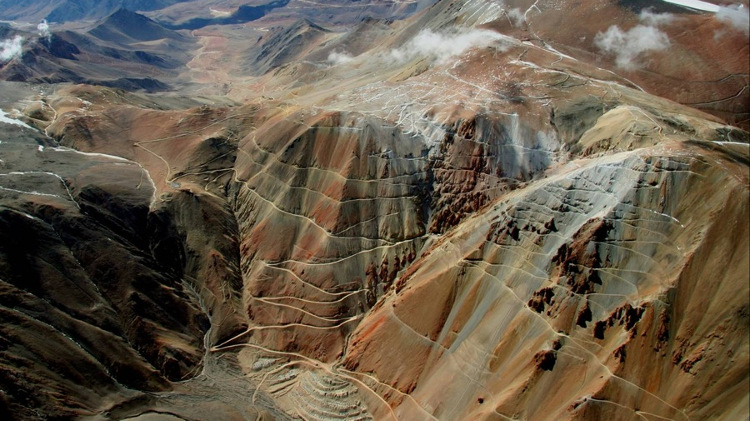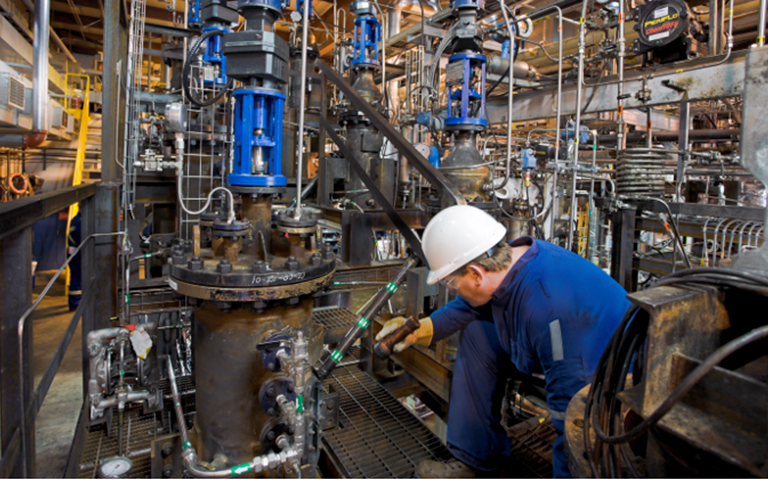Titanium Corporation's Creating Value from Waste demonstration pilot plant in Alberta's oil sands. Courtesy of Titanium Corporation
Oil sands mining giant Canadian Natural Resources (CNR) is working in tandem with a technology development company to shrink its environmental footprint by advancing a project to extract zircon and titanium from what would otherwise be sent out to the tailings pond. The two firms are promoting the technology and partnership as both an environmental win and a way to recover valuable materials.
The project relies on Titanium Corporation’s newly patented Creating Value from Waste (CVW) technology, which Julie Woo, the public affairs lead at CNR, described as “a suite of froth treatment tailings remediation technologies designed to reduce the environmental footprint of tailings and ponds by recovering valuable bitumen, solvents and minerals from tailings streams.”
“Canadian Natural, along with other oil sands producers, has been formally evaluating Titanium’s technology and its potential application at an oil sands mining operation over the last five years,” said Woo. After years of research and consultation, the plan is coming to fruition.
In early April, the global design and engineering firm Stantec received the contract for the front-end engineering design (FEED) of the project. IHC Robbins was also named to engineer the design for the minerals separation process for a commercial-scale facility at CNR’s Horizon oil sands operation near Fort McMurray, Alberta.
Related: How can companies speed up fluid fine tailings treatment in Alberta's oil sands?
While the specific design of the plant is still being determined, it will make use of a concentrator facility to intercept froth treatment tailings before they are discharged to ponds. The facility will extract most of the bitumen and solvent in the tailings stream and allow for an increase in the overall recovery of hydrocarbons. Following this process, a “mineral facility” will separate out useful heavy metals that can then be sold separately. According to Woo, the process will also recover water and offer “cleaner, dryer tailings, improving the reclamation process.”
“It’s really a remediation of this particular tailing stream, which is about 10 per cent of the overall tailings,” said Scott Nelson, president and CEO of Titanium. Nelson noted that preventing a deposit of hydrocarbons into these tailing ponds will reduce the methane released into the atmosphere, thereby reducing greenhouse gas emissions and a project’s overall environmental footprint. CVW technology is designed to prevent future hydrocarbon discharge and future methane production, he said, which means that the ponds will gradually stop producing methane as the historical contained hydrocarbons are consumed and no additional hydrocarbons are added.
There are a number of reasons CNR wanted to be the first to partner with Titanium, said Woo, including reducing or eliminating tailings pond emissions, speeding up tailings remediation and recovering materials like bitumen, solvent, zircon, titanium and rare earths from the tailings.
Some of those recovered commodities could add up to tens of thousands of tonnes of export materials. Zircon and titanium in particular have wide applications: zircon is used in ceramic production, refractories, catalysts and fibre optics, while titanium is used in everything from airplanes to naval ships.
Woo said the FEED study will cost an estimated $10.2 million, $5 million of which is being funded by Emissions Reduction Alberta, $1.5 million by Titanium and up to $3.7 million by CNR. Nelson estimated that the actual build stage, slated to begin in 2019, could cost around $400 million.
The details of the financing for the project are still being worked out, but Nelson said he expects to rely on a combination of government funding and project financing from banks, as well as the possible sale of equity. Federal and provincial funds specifically dedicated to new, innovative and sustainable technologies will be particularly relevant, along with the Business Development Bank of Canada and Export Development Canada.
Nelson said he is thrilled to move the project forward after years of development. “Having spent more than 10 years on this, our company, team, board and shareholders are very excited to get this past the finish line,” said Nelson. “It does good things for the industry, for the province and for the country. It’s a win-win-win, and we need more of these.”



